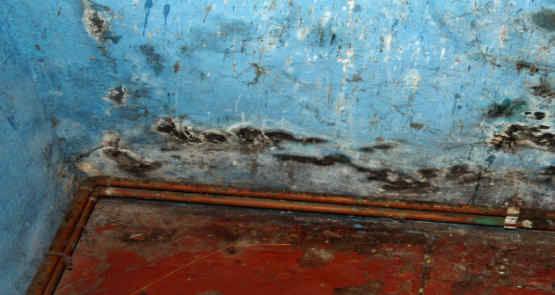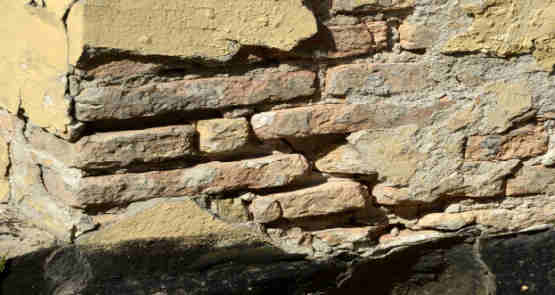Dry Rot Service Covering Plymouth, Devon & Cornwall
Dry Rot is a fungus that attacks wood. Its very posh name is Serpula Lacrymans (Wood destroying fungus). It can occur anywhere in the world and is very common. It was first found to affect forest timbers, but nowadays more people know it as a pest because of its destructive nature to destroy timber used in construction.
Dry rot is nothing new; it dates back to the 18th century in Europe. To this day we are still unsure as to how dry rot spores got to the UK to infect our timbers. One theory is that it was brought over to our shores by infected ships built with infected timbers. No one is 100% sure. It gets its name from the dry and brittle condition of the timber. This fungal growth ruins timber stripping it completely of its nutrients. For dry rot to set in the timber must have contained high moisture content in the first place.
It develops out of sight in damp, dark areas making it undetectable and not noticeable in the early stages of progress. If left it can spread rapidly in a damp environment such as an area with a penetrating damp problem or a very slow dripping leek from a water pipe or a leaky roof. The early signs and symptoms will be a mushroom like smell and you will notice the timbers shrinking and softening. It can migrate through plaster, block work or brickwork searching for material to consume, due to this it can be considered as having an extremely destructive nature.


Can dry rot spread & how
If the moisture content in timber rises above 20% it will be at risk of fungal attack. There are spores constantly in the air circulating. If they land and attached themselves on timber that is damp they will germinate and grow. If left they will progress into a white fungal growth with stands spreading out across the damp timber consuming the wood and moisture as it spreads. Eventually a round shaped maturing body will grow and when large enough it will burst releasing lots of red rusty looking spores into the atmosphere that will resettle back onto damp timber so the process begins again.
A unique factor of dry rot is its ability to migrate through voids and cracks in the buildings fabric in search for its food source. Due to this reason dry rot can spread very quickly. It has been known to grow up to half a metre a month given the correct environmental conditions. If you’re unsure what infestation you may have let us determine it for you. Here at Plymouth Damp Proofing (PDP) can immediately identify dry rot apart from any other form of timber destroying fungus.
We tick all the boxes for dry rot treatment:
- Tailor made survey
- Accurate diagnosis
- Eliminate all fungal growth
- Renew infected timbers
- Epoxy resin repairs
- Spray fungicide biocide to the complete area
- Make good as necessary
Here at Plymouth Damp Proofing (PDP) have surveyors that will seek and identify the source of the outbreak, Investigate and locate the point of why and where such damp conditions are present in the first place, which initiated the growth. Once this has been undertaken we can reach a conclusion and offer you our diagnosis with recommendations for the correct treatment methods installations to ensure it is applied in the correct manner.
Our detailed tailor made survey will cover all other contributing possibilities and potential problems such as condensation, the correct ventilation, any water migration or ingress and any other evidence of timber decay and rot. Within our survey will be detailed information regarding the drying out and drying times for wet timbers that can be saved along with the specification requirements for the timbers than cannot be saved and need taking out and replacing.
The treatment involves the following:
- Locate and stop all leaks and places of water migration or ingress that has been causing the damp
- Perform a detailed tailor made survey covering ventilation, condensation and damp proofing
- Take out all rotted timbers that cannot be saved and renew
- Safeguard the ends of electrical conduits & exposed junction boxes inside the treatment area
- Treatment fungicidal spray of all timbers in place than can be saved
- Treatment fungicidal spray or dual-purpose fungicide or specialist timber pastes to the surrounding areas
- For historical & listed buildings the use for timber resin repairs is essential for replacement timbers
Our teams of trained engineers are multi skilled and use the correct products available to ensure the treatment of the rot and all other spores are eradicated completely preventing them from returning. The variety of wood biocides and preservatives we have at our disposal are the latest in technology delivering maximum efficiency whilst maintaining minimal levels of danger to health & safety to the environment, general public and the residents of the property.
Fungal decay is the most common cause of destruction to structural timber in buildings. It can effect any timber whatsoever from a new building with new timber to an old building with a hundred year old timber. Fungal Decay is not bias, given the correct conditions it will thrive and is also quite common for it to spread a considerable amount before it is actually seen.
As it continues to feed on the timbers in your home we may have to remove the plaster from the walls to apply a fungicide biocide agent to the masonry walls along with all the timbers.
How to deal with dry rot
Outbreaks of fungal attack require a certain environment in order to germinate so it is necessary to identify the reasons behind the fungal growth prior to addressing the fungal attack itself. Ventilation changes combined with damp problems can produce the perfect conditions suitable for the fungus to lay spores, grow and attack timber ending up in dry rot or even wet rot. The initiating factors to dry or wet rot vary greatly but it can be caused but such factors such as an internal leaky pipe, faulty leaking roofs, broken rainwater goods or insufficient ventilation. All faults should be rectified first before dealing with the dry or wet rot.
Once a detailed survey has been performed and the correct diagnosis has been made to determine if the fungi problem is dry rot or wet rot it is treated with fungicide biocide directly to all infected timbers and non infected surrounding timbers to kill and lying dormant spores. Any timber not savable will have to be replaced. Any masonry walls infected will have treatment with another very similar fungicide biocide fit for purpose with masonry to insure the problem does not return.
Does your home or building have dry rot?
First sign to notice will be a mushroom like smell; if you can smell this and your not cooking you may well have a problem. Lets say while walking to your kitchen your foot goes straight through a floorboard or you take up a floorboard in carrying out other remedial works like installing new cable wiring for an additional socket and find a mass of fungal growth.
Keep an eye out for white fungal growths having lilac or yellow tinges spreading out or even brown and red mushroom looking growths that can yield red spores. If you are able, feel the surrounding timbers. If they crumble and flake on contact between your fingers go sit down as unfortunately you and your home have a problem that needs fast attention. It can be a little confusing as the fungal growth is known as dry rot but don’t be mislead by its name. The cause of dry rot is damp. New dwellings, old dwellings, offices, barns, it is not picky. Given the correct conditions will encourage the fungus to grow and if left severely compromise the buildings structure. The damp needs to be rectified to ensure other timbers are not affected. You need help so call Plymouth Damp Proofing (PDP) and we can assist you. Our fungal specialists will locate, identify, and apply the correct treatment to eliminate the fungal attack to prevent it from returning.
Our Warranty/Guarantee
We are proud to say we take pride in our reputation and how we work. Upon completion of our works you will receive our personal workmanship warrantee along with our guarantee and a manufactures guarantee protected and backed up by the Guarantee Protection Insurance Scheme or (GPI).
We are also looking to become members of the Property Care Association, CHAS, Construction Line and Trust Mark for your peace of mind. All our warranty and guarantees are transferable to new owners of your home if you sell your property.
What lengths of Guarantee do we offer?
- Basement water proofing treatments will receive a 10-year guarantee
- All Woodworm treatments, Dry Rot, Wet Rot and Rising Damp will receive a 30-year guarantee
- Timber unit and window treatments will receive a 5-year guarantee
- As an extra on request we can issue an independent insurance backed guarantee


Our services we supply in short:
- Damp proofing advice & support
- Damp Surveys
- Basement waterproofing
- Rising damp treatments
- Condensation treatments & control
- Woodworm Treatment
- Wet rot & dry rot treatments
Remember your property is at risk if you let damp set in and do nothing about it!
Please feel free to contact us for further advice
If you are concerned about any of the above issues affecting your property, please contact us and a member of our team will be happy to help, as we are Specialists in Property Surveying.



